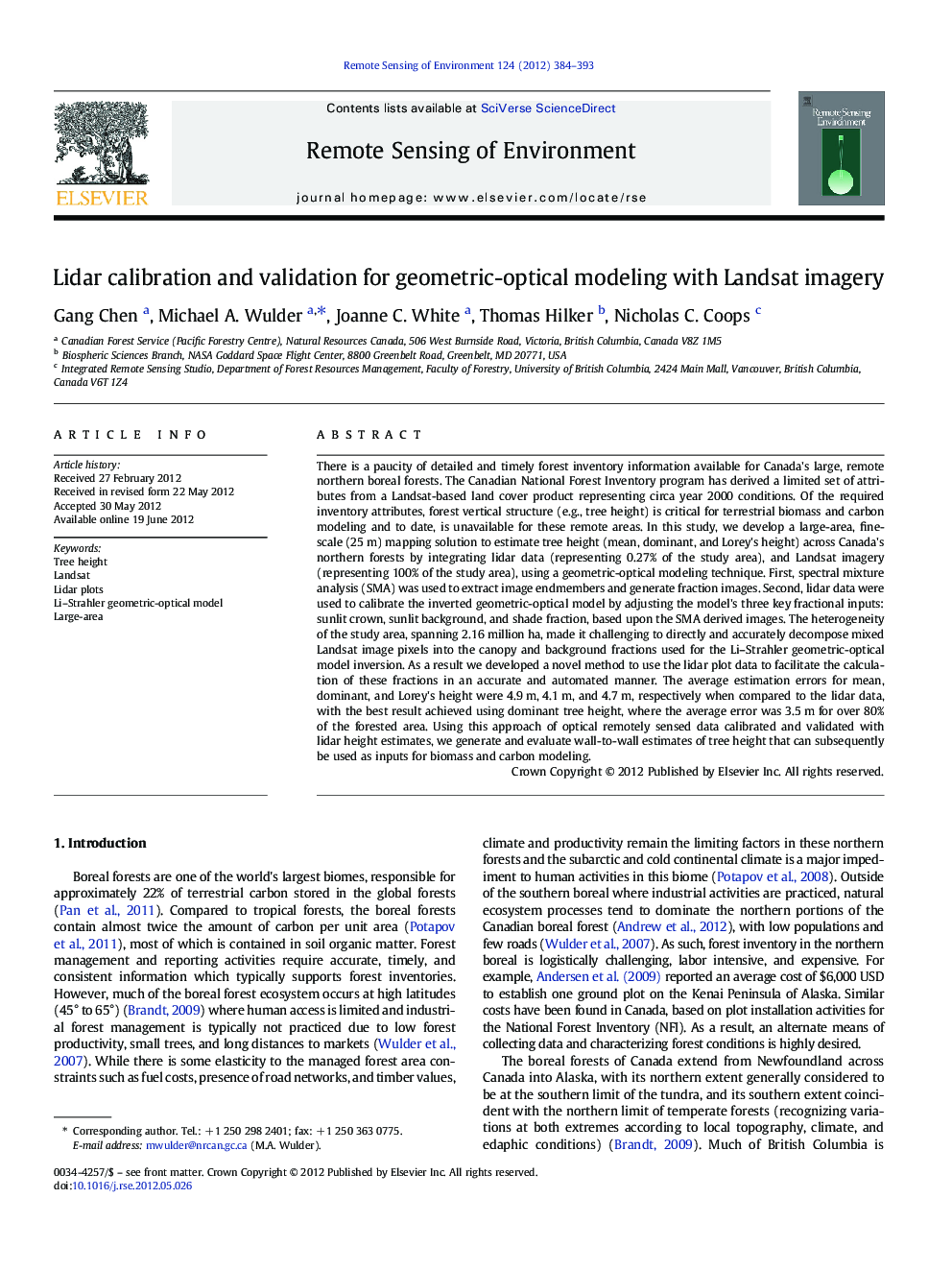| Article ID | Journal | Published Year | Pages | File Type |
|---|---|---|---|---|
| 4459015 | Remote Sensing of Environment | 2012 | 10 Pages |
There is a paucity of detailed and timely forest inventory information available for Canada's large, remote northern boreal forests. The Canadian National Forest Inventory program has derived a limited set of attributes from a Landsat-based land cover product representing circa year 2000 conditions. Of the required inventory attributes, forest vertical structure (e.g., tree height) is critical for terrestrial biomass and carbon modeling and to date, is unavailable for these remote areas. In this study, we develop a large-area, fine-scale (25 m) mapping solution to estimate tree height (mean, dominant, and Lorey's height) across Canada's northern forests by integrating lidar data (representing 0.27% of the study area), and Landsat imagery (representing 100% of the study area), using a geometric-optical modeling technique. First, spectral mixture analysis (SMA) was used to extract image endmembers and generate fraction images. Second, lidar data were used to calibrate the inverted geometric-optical model by adjusting the model's three key fractional inputs: sunlit crown, sunlit background, and shade fraction, based upon the SMA derived images. The heterogeneity of the study area, spanning 2.16 million ha, made it challenging to directly and accurately decompose mixed Landsat image pixels into the canopy and background fractions used for the Li–Strahler geometric-optical model inversion. As a result we developed a novel method to use the lidar plot data to facilitate the calculation of these fractions in an accurate and automated manner. The average estimation errors for mean, dominant, and Lorey's height were 4.9 m, 4.1 m, and 4.7 m, respectively when compared to the lidar data, with the best result achieved using dominant tree height, where the average error was 3.5 m for over 80% of the forested area. Using this approach of optical remotely sensed data calibrated and validated with lidar height estimates, we generate and evaluate wall-to-wall estimates of tree height that can subsequently be used as inputs for biomass and carbon modeling.
► We develop a large-area tree height mapping solution in Canada's northern forests. ► We integrate sampled lidar data, Landsat imagery, and geometric-optical modeling. ► The RMSE of estimating dominant tree height is 3.5 m for more than 80% of the forested area.
